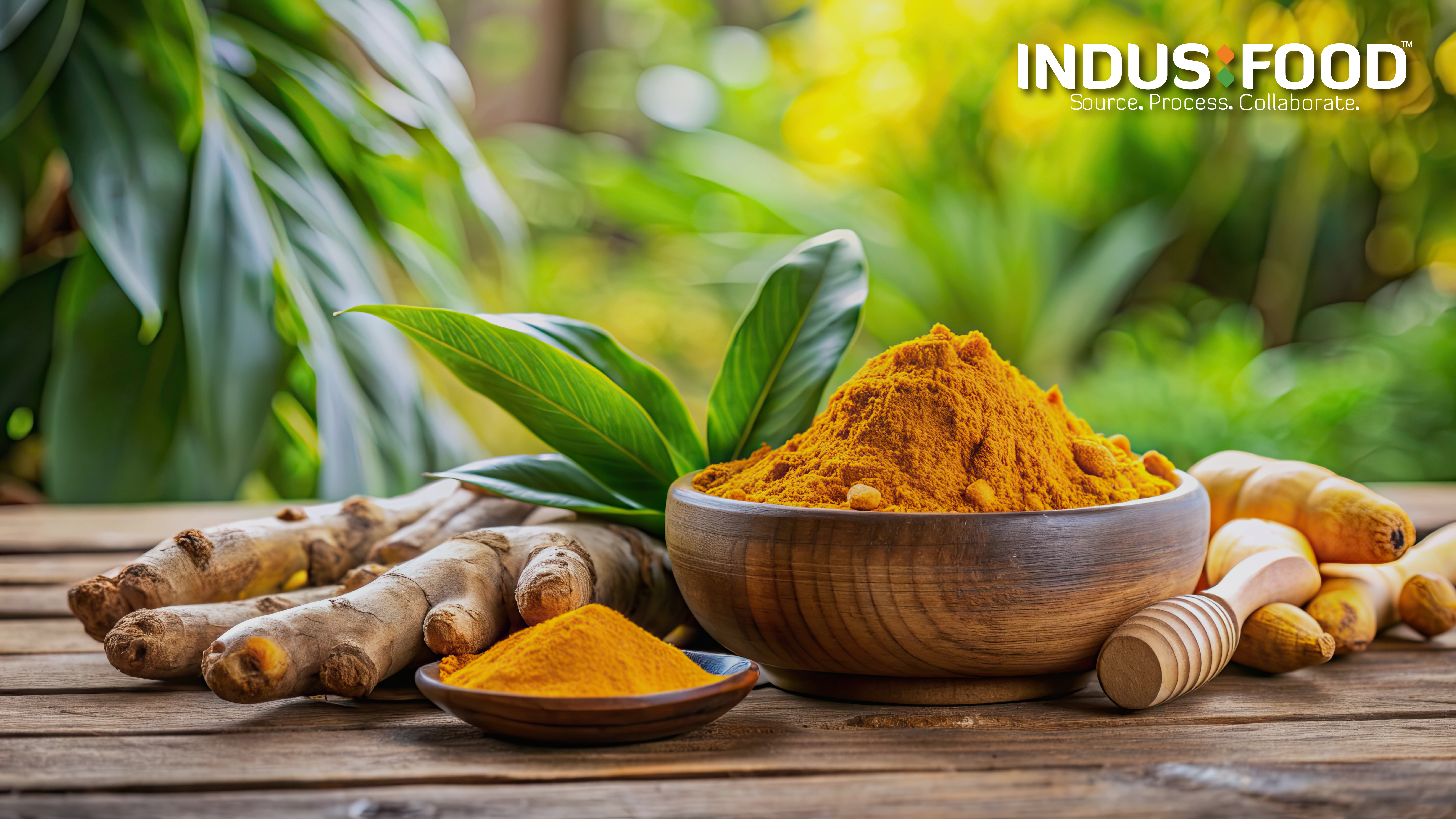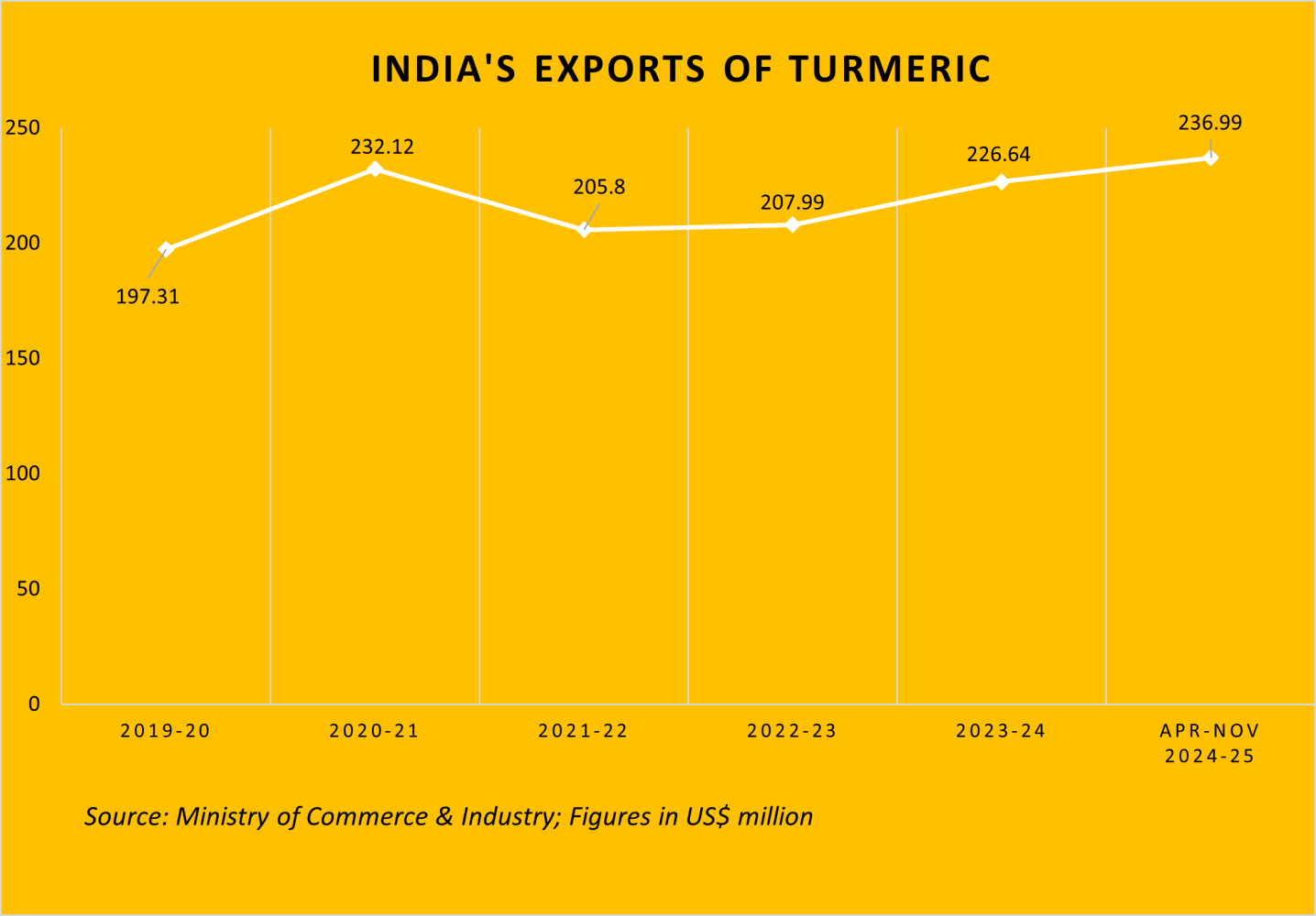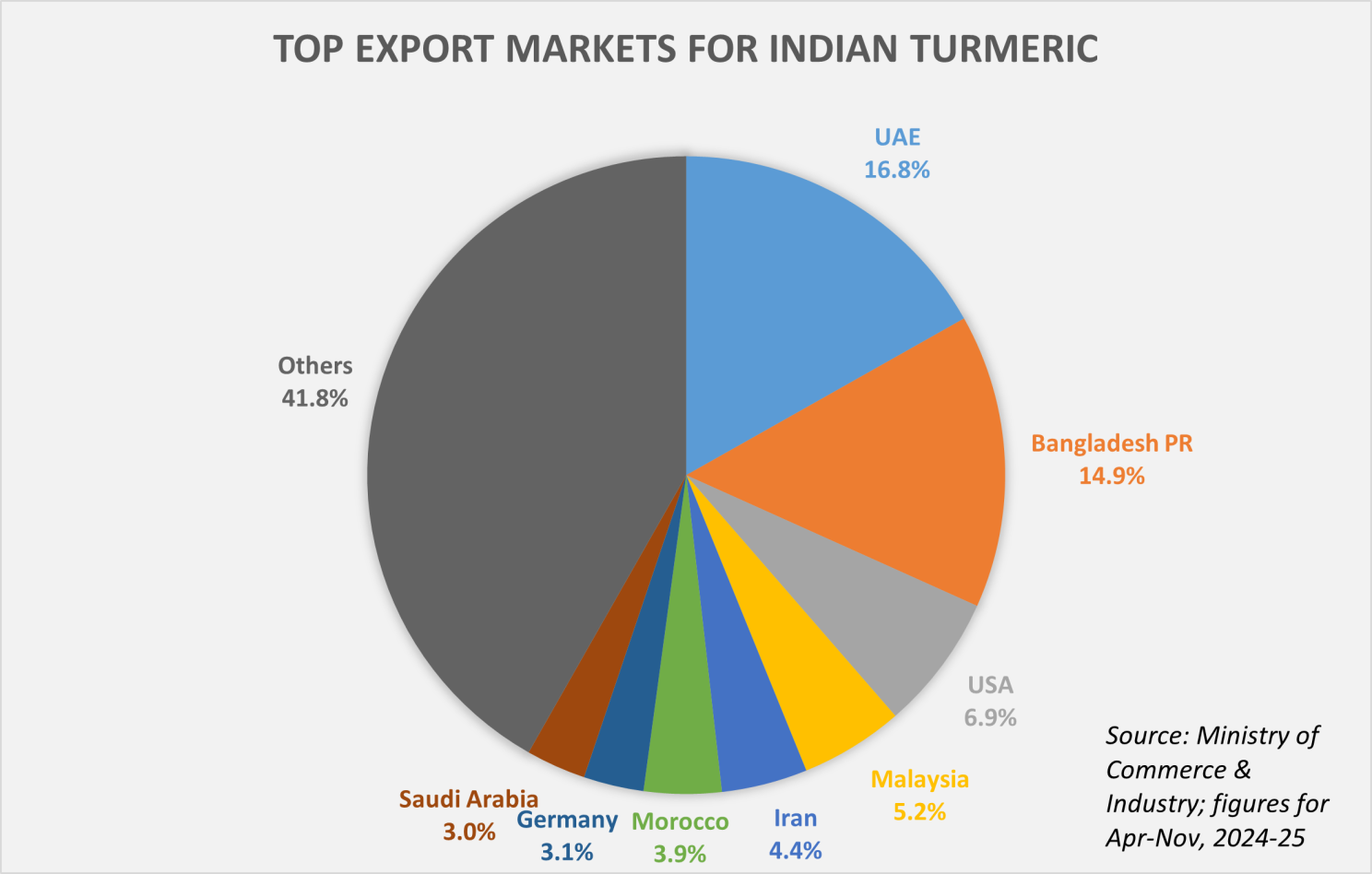
Turmeric, or haldi, holds a profound place in Indian life, blending health, cuisine, and spirituality. In Ayurveda, it is revered as a powerful healer, known for its anti-inflammatory, antibacterial, and immunity-boosting properties. From treating common colds to aiding digestion, turmeric is a staple in Indian households for its medicinal benefits, thereby being a fond childhood memory.
In Indian cuisine, turmeric is indispensable. It imparts a golden hue and earthy flavour to curries, dals, and pickles. Beyond taste, it is believed to purify food and enhance digestion, making it a daily essential.

Religiously, turmeric symbolizes purity and prosperity. It is used in Hindu rituals, weddings, and festivals, often applied to deities and newlyweds for blessings. The sacred haldi ceremony in weddings signifies protection and auspiciousness. It is integral not just to India, but to many South Asian cultures.
Over the past few years, this golden spice is fast becoming a global sensation, as a condiment, dye, drug and raw material in the cosmetic industry. The turmeric market was valued at around US$ 58.2 million in 2020 and is poised to grow at a CAGR of 16.1% between 2020 and 2028, particularly with rising awareness of its health benefits.
The focus of all the excitement around this spice is the natural compound (polyphenol) called curcumin, which has both antioxidant and anti-inflammatory properties. It is considered a “wonder drug of life”— offering several health benefits, including wound healing and acts as an anti-diabetic, anti-oxidant, antibacterial, anti-inflammatory, anti-cancer, and anti-viral agent. “Mainstream medical science is only now beginning to understand the benefits of turmeric, and it has become a hot topic for research, even in the context of neurodegenerative diseases such as dementia and Alzheimer’s.”
Turmeric production in India was valued at 11.61 lakh tonnes (over 75% of global turmeric production) in 2022-23, with an area of 3.24 lakh ha under cultivation. Maharashtra, Telangana, Tamil Nadu, Karnataka, Madhya Pradesh, Andhra Pradesh and Odisha are some of the top turmeric-producing states in India. India’s turmeric repertoire is huge, with over 30 varieties being cultivated across over 20 states (ICRIER). Agricultural research institutions have developed both local and improved varieties.

Based on their geographical location, these varieties differ in terms of curcumin content, yield and disease resistance. India has obtained 6 GI tags for turmeric including Vasmat Haldi (Hingoli, Maharashtra); Erode Turmeric (Erode District, Tamil Nadu); Kandhamal Haldi (Kandhamal District, Odisha); Lakadong Turmeric (Jaintia Hills District, Meghalaya); Sangli Turmeric (Sangli District, Maharashtra) and Waigaon Turmeric (Wardha District, Maharashtra).
India is the largest exporter of turmeric, with exports valued at US$ 226.6 million in 2023-24, growing at a 4-year CAGR of around 3%. Exports in the current fiscal have seen a remarkable surge to reach US$ 237 million in April-November 2024-25.
When you look at market share in 2023-24, the UAE leads with a share of 16.8%, followed by Bangladesh PR (14.9%), US (6.9%), Malaysia (5.2%) and Iran (4.4%).
The potential of turmeric is undoubtedly vast, but it can be truly realised through value addition and market development. In order to achieve this objective, the government has recently announced the launch of the National Turmeric Board to “increase awareness and consumption of turmeric and develop new markets internationally to increase exports”. It will also support R&D and further enhancement of India’s traditional knowledge for value added products. It will also focus on capacity building and skill development of turmeric growers and promotion of quality and food safety standards.
Palle Ganga Reddy has been nominated as the board’s first chairperson and its headquarters has been set up at Nizamabad, Telangana. Representatives of Ministry of AYUSH, Department of Pharmaceuticals, Department of Agriculture & Farmers Welfare and Department of Commerce have also been nominated as members.
Turmeric is already a key ingredient in many Asian dishes, which infuses a mustard-like, earthy aroma and pungent, slightly bitter flavor to foods. It is also used in some sweet dishes, such as the cake sfouf.
It is presently an ingredient in many products such as canned beverages, baked products, dairy products, ice cream, yogurt, yellow cakes, orange juice, biscuits, popcorn, cereals, sauces, and gelatin. It is a principal ingredient in curry powders and has a lot of uses in East Asian recipes, such as pickles.
To increase its usage beyond Asia, more innovative value added products need to be developed and promoted that can expand turmeric’s appeal to other cuisines.
Traditional medicinal plants like turmeric have been serving mankind for thousands of years, much longer than modern medicine. However, actual integration of turmeric with modern medicine is required for wider acceptance in the medical community.
Research shows that the beneficial effects of turmeric are normally achieved through dietary consumption, even at low levels, over long periods of time. Phytochemical analysis of turmeric indicates the presence of a large number of compounds, including curcumin, volatile oil, and curcuminoids, which have potent pharmacological properties.
But for its practical use in treatment of human diseases, further clinical studies are necessary. This will also provide a precise understanding of effective dose, safety, and mechanism of action for its rational use in treatment of human diseases.
Turmeric’s journey from an ancient healing spice to a global phenomenon is just beginning. While it has been an integral part of Indian culture for centuries, its potential extends far beyond traditional uses. From culinary innovations to wellness applications and cutting-edge medical research, turmeric’s golden glow is spreading worldwide. By embracing innovation, enhancing value addition, and integrating it with modern medicine, we can unlock new opportunities for this extraordinary spice. As science continues to explore its benefits, and global markets recognize its value, turmeric is poised to become not just a household staple but a symbol of health, sustainability, and cultural heritage across the world.
Read More:
© Trade Promotion Council of India. All Rights Reserved.